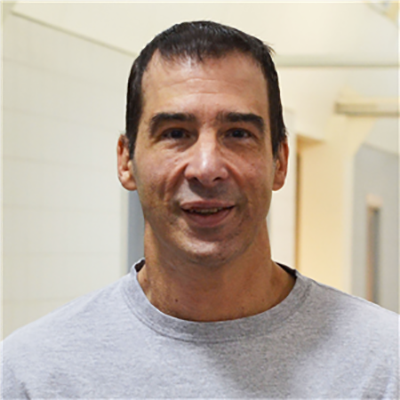
Nick Glumac
Education
- Ph.D. ME California Institute of Technology 06/94
- M.S. Aeronautics California Institute of Technology 06/90
- B.S. ME University of California, Santa Barbara 06/89
Academic Positions
- Professor, Department of Mechanical Science and Engineering, UIUC, August 16, 2007-date
- Cannon Faculty Scholar, Department of Mechanical Science and Engineering, UIUC, 2003-present
- Associate Professor, Department of Mechanical Science and Engineering, UIUC, June 21, 2000-2007
- Associate Professor, Department of Mechanical and Aerospace Engineering, Rutgers University, Piscataway, NJ, June 1999-November 1999
- Assistant Professor, Department of Mechanical and Aerospace Engineering, Rutgers University, Piscataway, NJ, Sept. 1994-June 1999
Major Consulting Activities
- Packer Engineering, Inc., Naperville, IL
- Blacklight Power, Inc., Cranbury, NJ
- Reynolds Systems Industries, Tracy, CA
Research Statement
Professor Glumac studies the combustion synthesis of materials, combustion diagnostics, catalysis and catalytic combustion, chemical vapor deposition and reactive flow modeling.
His current research focuses on metal combustion as it relates to the military and aerospace industries. He and MechSE colleague Herman Krier are working together to develop a better understanding of how aluminum burns. (Aluminum constitutes about 20 percent of the fuel in solid rocket engines used on the Space Shuttle.) They are also investigating aluminum hydride, an alternative to aluminum that may produce better range and performance, but may also have undesirable features.
His research on metal combustion makes use of the shock tube facility developed by Professor Krier and Professor Rodney Burton of the Department of Aerospace Engineering. The shock tube provides the only way to conduct controlled experiments with metal particles, experiments that previously were not possible. Using the shock tube facility, Professors Glumac and Krier are able to test the validity of existing hypotheses about metal combustion. One theory suggested that aluminum always burns faster in water vapor than in carbon dioxide. The controlled environment of the shock tube provided a way for them to test this theory by directly comparing oxidation rates of aluminum in water vapor, carbon dioxide and oxygen. They learned that carbon dioxide is an increasingly important oxidizer for aluminum, particularly with small particle diameters. Another theory predicted that at small particle sizes, aluminum converts from diffusion limited combustion to kinetic limited combustion. The particle size at which that transition occurs had been unknown until experiments by Professors Glumac and Krier revealed that diffusion limited combustion begins to break down at particle sizes of 10 microns and smaller.
In the area of defense, Professor Glumac is testing new materials for thermobaric explosives, which have a high energy release but are less polluting than traditional explosives.
Research Interests
- Thermophysics of reactive materials
- Metal combustion
- Combustion diagnostics
Research Areas
- Chemistry
- Energy
- Fluid Mechanics
- Security and Defense
- Thermo and Heat Transfer
Selected Articles in Journals
- Lynch, P.T., H. Krier, and N. G. Glumac, “Micro-alumina Particle Volatilization Temperature Measurements in a Heterogeneous Shock Tube,” Combustion and Flame, 159:2, 793-801, 2012.
- Glumac, N.G., W. Jarrel, and W. K. Dong, “Quantitative Analysis of Soil Carbon using Laser-induced Breakdown Spectroscopy: An Improved Method,” Soil Science Society of America Journal, 74:4, 1922-1928 Nov-Dec 2010.
- Lazar, E., G. Elliott, and N. Glumac, “Energy Deposition Applied to a Transverse Jet in a Supersonic Crossflow,” AIAA JOURNAL, 48:8, 1662-1672, August 2010.
- Sharma, M., J. M. Austin, N. G. Glumac, and L. Massa, “NO and OH Spectroscopic Vibrational Temperature Measurements in a Postshock Relaxation Region,” AIAA Journal, 48:7, 1434-1443, 2010.
- Bazyn, T., P. Lynch, H. Krier, and N. Glumac, “Combustion Measurements of Fuel Rich Aluminum and Molybdenum Oxide Nano Composite Mixtures,” Propellants, Explosives, and Pyrotechnics, 35:2, 93-99, 2010.
Professional Societies
- Member, Society for Applied Spectroscopy
- Member, The Society for Automotive Engineers
- Member, Central States Section of the Combustion Institute Advisory Board, 2003-date, Chairperson 2011-2013, Treasurer 2013-2015
- Member, The Combustion Institute
- Member, American Institute of Aeronautics, and Astronautics (AIAA)
Teaching Honors
- CoE Five Year Teaching Effectiveness Award, Fall 2010
- Listed in the Daily Illini “Incomplete List of Teachers Ranked as Excellent by Their Students” for Fall 2004, Spring 2007
Research Honors
- AIAA Best Paper Award with G.S. Elliott and E. Lazar, 2009.
- Cannon Faculty Scholar, Department of Mechanical Science and Engineering, UIUC, 2003-present
- AIAA Best Paper Award with G. S. Elliott and C. D. Carter (Rutgers University), 1998
Courses Taught
- AE 538 – Combustion Fundamentals
- ME 200 – Thermodynamics
- ME 320 – Heat Transfer
- ME 404 – Intermediate Thermodynamics
- ME 498 – Engineering Spectroscopy